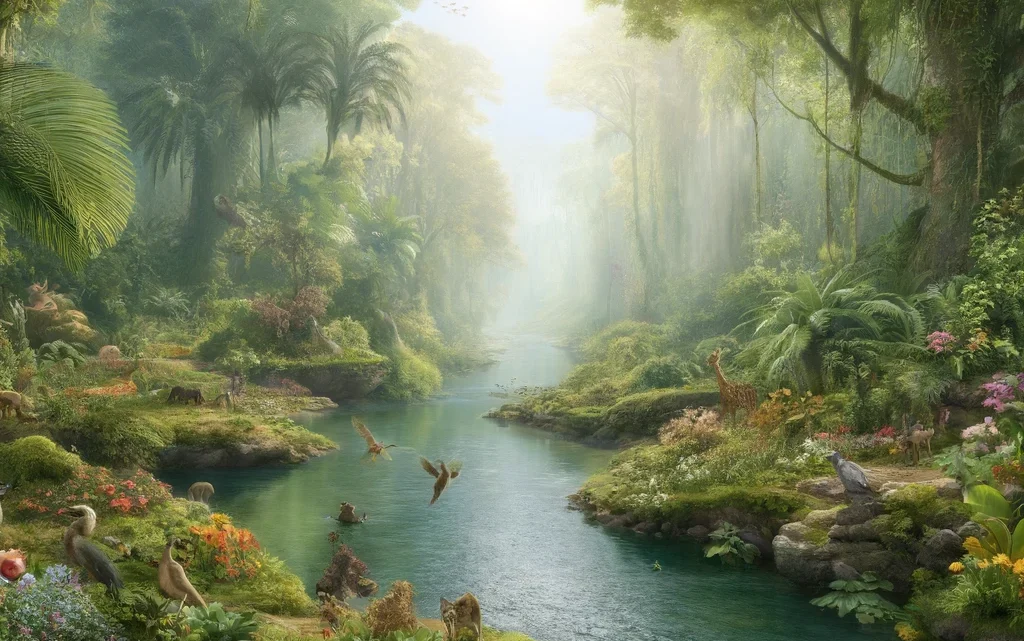Unveiling the Mystery of the Garden of Eden’s Location: A Comprehensive Approach Using Biblical, Historical, and Geographical Data


The quest to locate the Garden of Eden has intrigued theologians, historians, and geographers for centuries. To bring clarity to this ancient mystery, this discussion examines biblical accounts, historical references, and geographical data from a variety of sources. Through these insights, we aim to identify the most likely location for this iconic biblical paradise.
Biblical References
The King James Version (KJV) of the Bible offers foundational clues regarding the Garden of Eden:
- Genesis 2:10-14 describes a river originating from Eden that divides into four branches—Pishon, Gihon, Tigris, and Euphrates. The text also provides some geographic markers, mentioning that the river Pishon encompasses the land of Havilah, which is rich in gold, resin, and precious stones.
- Genesis 2:13 notes that the river Gihon flows around the land of Cush, a region commonly associated with Ethiopia or its vicinity.
Historical References
A more profound understanding emerges when we consider historical contexts and records:
- Havilah is often identified with a region in eastern Africa or southern Arabia, with some scholars suggesting that it aligns with the Wadi Hadhramawt valley in Yemen.
- Cush is traditionally linked to Ethiopia, an ancient kingdom located near the Nile River in East Africa, extending into Sudan. This connection indicates a broader geographical span for the Garden of Eden.
Additional Ancient Texts
To enrich our exploration, we can consider other ancient texts and traditions:
- The Book of Enoch situates the Garden of Eden between the rivers Pishon and Gihon, indicating that it might reside somewhere between these two regions.
- The Talmud, a collection of Jewish oral traditions, references the Garden of Eden’s proximity to the River Pison (likely Pishon), indicating a connection to the broader Middle East.
- The Sumerian King List connects the Garden of Eden with the ancient land of Dilmun, potentially located in Bahrain or Kuwait.
Geographical Data
Geographical analysis helps us contextualize these ancient references:
- River Pishon may correspond to the Wadi Hadhramawt valley in Yemen, based on descriptions from Genesis.
- River Gihon is often linked to the Nile River, which flows from Lake Victoria in East Africa, indicating a connection to Ethiopia or Sudan.
Approximate Location
Combining all this information, the most likely location for the Garden of Eden is somewhere in eastern or southern Africa, potentially near the intersection of Ethiopia, Eritrea, or Yemen. The River Pishon might align with the Wadi Hadhramawt valley in Yemen, while the River Gihon could correspond to the Nile River’s origin in East Africa.
Conclusion
By synthesizing biblical texts, historical references, and geographical data, we have a clearer understanding of the Garden of Eden’s potential location. As we continue to explore and analyze, this journey into the past offers valuable insights into ancient narratives and the landscapes that may have inspired them.










